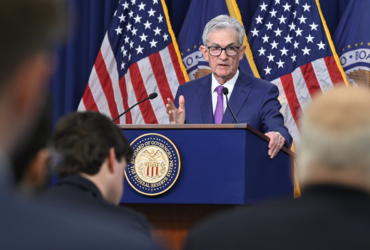In the latest report from the U.S. Department of Labor, initial jobless claims for the week ending on March 9th have pleasantly surprised analysts by slightly decreasing to 209,000 claims. This figure notably defied expectations, as economists had anticipated a rise to 218,000 claims. Despite this positive deviation, concerns linger as continuing claims rose to 1.81 million, although the increase was smaller than the forecasted 1.9 million. This rise in continuing claims marks a 5-week high, raising questions about the trajectory of the labor market.
The data paints a nuanced picture of the current state of the U.S. labor market. On one hand, the slight decrease in initial jobless claims suggests some resilience, indicating that fewer individuals are filing for unemployment benefits. This could signal a degree of stability in employment levels and perhaps even a modest improvement in job market conditions.
However, the rise in continuing claims tempers optimism, indicating that while fewer individuals may be losing their jobs, a significant number are still struggling to find new employment opportunities. The fact that continuing claims reached a 5-week high underscores the persistent challenges facing many workers in securing steady employment.
The discrepancy between initial and continuing claims suggests a complex narrative underlying the labor market. It is possible that some sectors are experiencing layoffs while others are hiring, resulting in a churn of job seekers entering and exiting unemployment rolls. Additionally, factors such as seasonal fluctuations, industry-specific dynamics, and ongoing economic uncertainties could be influencing these trends.
Despite these mixed signals, it’s crucial to acknowledge the broader context of the U.S. economy. Over the past several months, the labor market has shown remarkable resilience in the face of various challenges, including supply chain disruptions, inflationary pressures, and the ongoing impacts of the COVID-19 pandemic. The unemployment rate has steadily declined, reaching historically low levels, and job creation has remained robust in many sectors.
Yet, the latest data suggests that while the labor market remains tight, there are emerging signs of loosening. The rise in continuing claims, albeit smaller than expected, underscores the need for continued vigilance and targeted policy measures to support those who are still grappling with joblessness. Initiatives aimed at upskilling workers, promoting workforce mobility, and fostering job creation in key industries will be crucial in addressing the lingering disparities within the labor market.
Moreover, as the Federal Reserve and policymakers navigate the path forward, they must carefully weigh these mixed signals to formulate appropriate monetary and fiscal policies. Balancing the need to support economic growth with the imperative of containing inflationary pressures will require a nuanced approach that takes into account the evolving dynamics of the labor market.
In conclusion, while the slight decrease in initial jobless claims offers a glimmer of hope, the rise in continuing claims underscores the ongoing challenges facing many workers. The labor market remains tight, yet signs of loosening suggest a delicate balancing act ahead for policymakers and economic observers alike. Vigilance, adaptability, and targeted interventions will be essential in navigating the uncertainties that lie ahead and ensuring a resilient and inclusive recovery for all.





